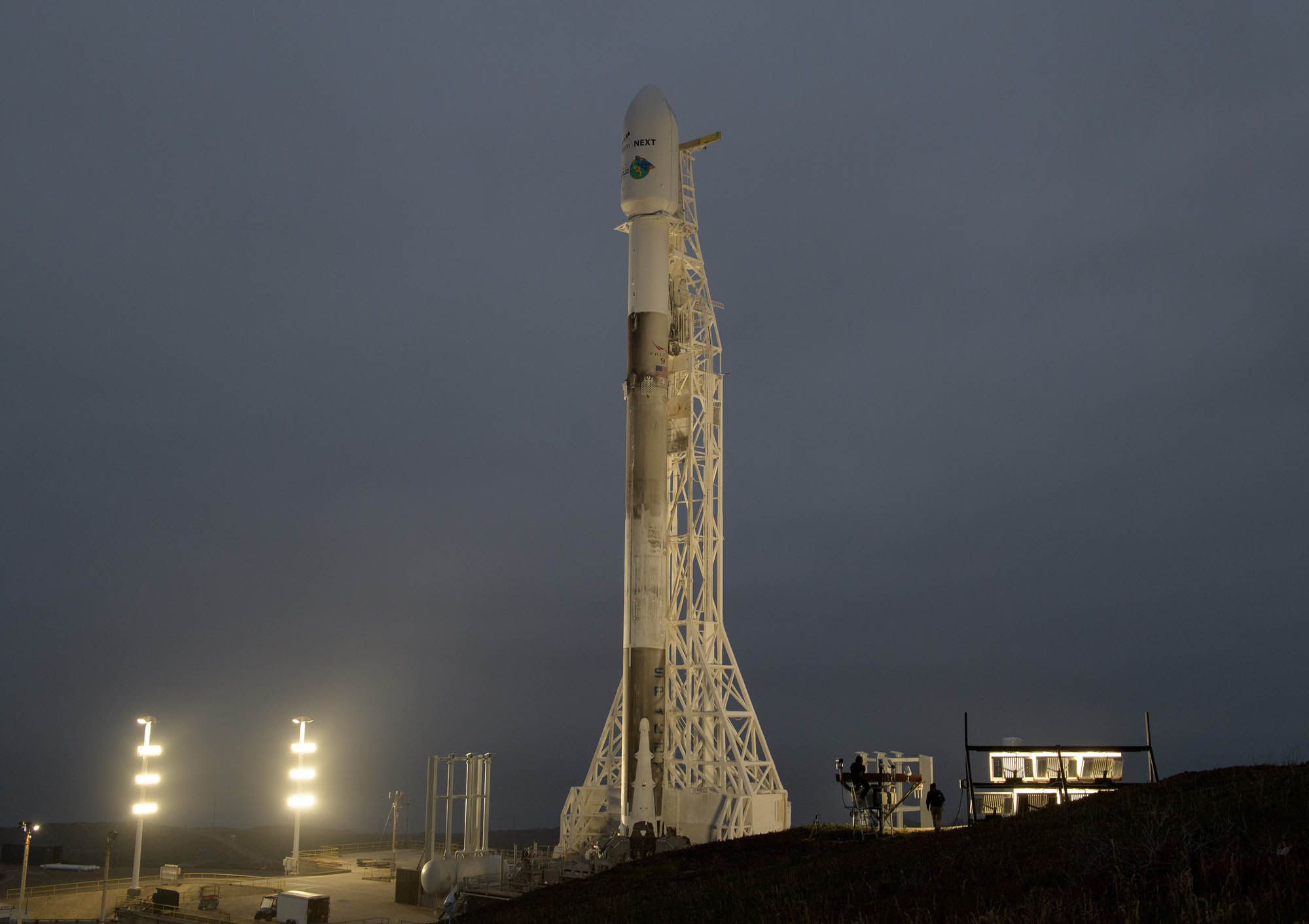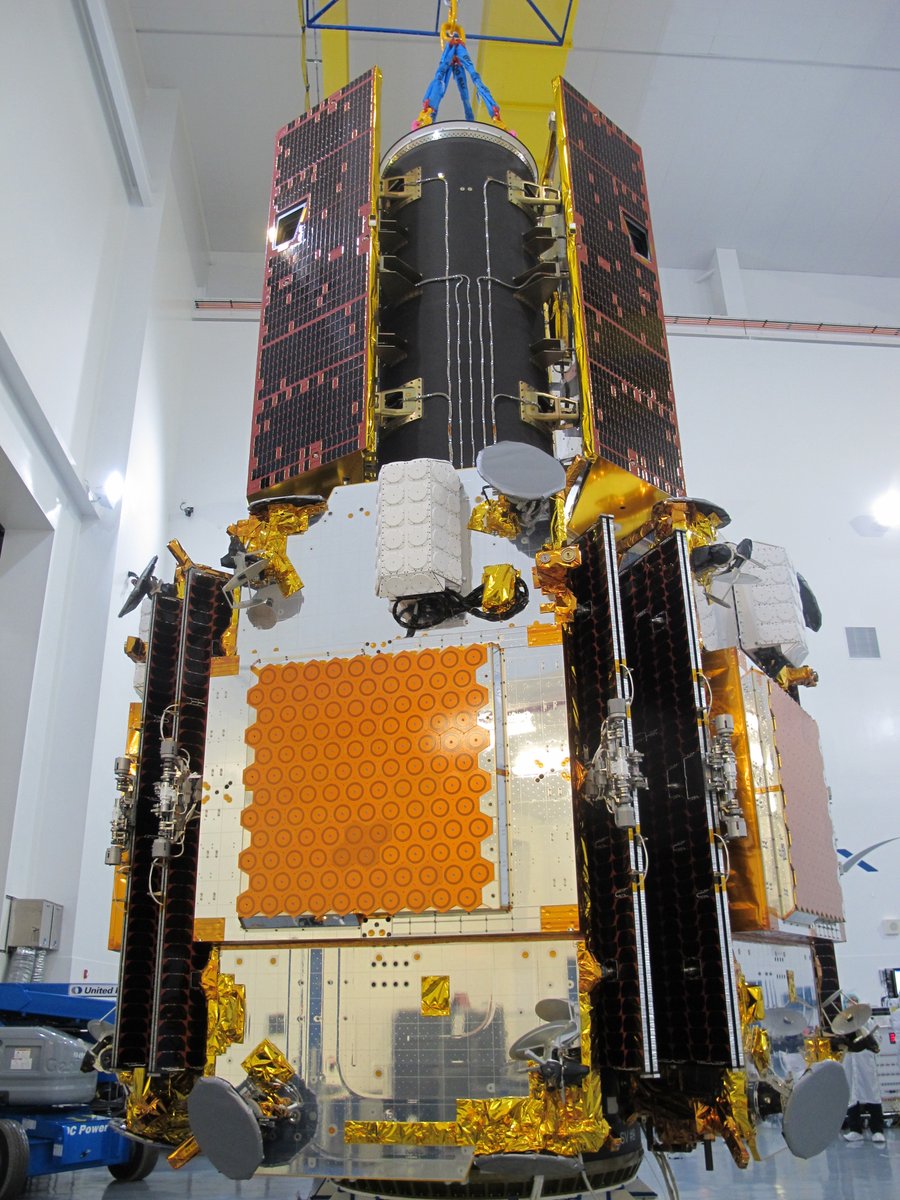SpaceX Will Launch 7 Satellites for NASA and Iridium Today! Here's How to Watch

SpaceX will launch two new Earth-observing satellites for NASA and five commercial communications satellites today (May 22) in a ride-share mission that you can watch live online.
NASA's Gravity Recovery and Climate Experiment Follow-On (GRACE-FO) mission and five Iridium Next communications satellites will lift off on a used Falcon 9 rocket from Vandenberg Air Force Base in California at 3:47 p.m. EDT (12:47 p.m. PDT, 1947 GMT). You can watch the launch live here at Space.com and on our homepage starting at 3:15 p.m. EDT (12:15 p.m. PDT, 1915 GMT), courtesy of a NASA TV webcast.
The Falcon 9 rocket booster previously launched the U.S. Air Force's classified Zuma mission in January. (That mission was lost, but SpaceX was not to blame for the mishap.) Although the rocket stuck a flawless landing on its last mission, SpaceX does not plan to attempt a landing for this flight. [The Evolution of SpaceX's Rockets in Pictures]
The Iridium Next communications satellites that SpaceX is launching with GRACE-FO are the latest in a series for Iridium Communications to build up that company's satellite constellation. The five Iridium Next satellites will join 50 other satellites already in orbit from five previous SpaceX launches (each of which launched 10 satellites). When complete, the Iridium Next constellation will include 75 satellites — 66 operational satellites and nine spares.

GRACE-FO, a joint project between NASA and the GFZ German Research Center for Geosciences, will use twin satellites the size of small cars to map changes in Earth's water and ice, such as rising sea levels and melting of the polar ice caps. Unlike most Earth-observation satellites, GRACE-FO won't "use imagers [to] collect light reflected from the surface or the atmosphere," said David Jarrett, GRACE-FO program executive, said at a news conference Monday (May 21). Rather, "the instrument is really the two satellites together as a system" to detect changes in Earth's gravity, he said.
The two identical spacecraft will fly in unison, with one trailing the other at a distance of 137 miles (220 kilometers). When they pass over a part of the Earth where the strength of the gravity field either increases or decreases, it will affect the distance between the two spacecraft ever so slightly. So, to obtain information about the distribution of mass below, the GRACE-FO satellites need not look down; instead, they'll only "look" at each other and measure their separation by constantly sending microwave signals back and forth.
"If mass changes on the ground — like in aquifers, or melting glaciers, or in the oceans and so on — you see it immediately in a change which we measure very, very precisely by a microwave tracking system with a precision of about 1 micrometer. That is about one-tenth of a human hair over the distance between Los Angeles and San Diego," Frank Flechtner, GRACE-FO's project manager at GFZ in Potsdam, Germany, said at the news conference.
Get the Space.com Newsletter
Breaking space news, the latest updates on rocket launches, skywatching events and more!
GRACE-FO will spend the next five years mapping Earth's gravity to study the effects of climate change around the world.
Visit Space.com today for complete coverage of SpaceX's Falcon 9 launch for NASA's GRACE-FO and Iridium's satellite constellation.
Email Hanneke Weitering at hweitering@space.com or follow her @hannekescience. Follow us @Spacedotcom, Facebookand Google+. Original article on Space.com.
Join our Space Forums to keep talking space on the latest missions, night sky and more! And if you have a news tip, correction or comment, let us know at: community@space.com.

Hanneke Weitering is a multimedia journalist in the Pacific Northwest reporting on the future of aviation at FutureFlight.aero and Aviation International News and was previously the Editor for Spaceflight and Astronomy news here at Space.com. As an editor with over 10 years of experience in science journalism she has previously written for Scholastic Classroom Magazines, MedPage Today and The Joint Institute for Computational Sciences at Oak Ridge National Laboratory. After studying physics at the University of Tennessee in her hometown of Knoxville, she earned her graduate degree in Science, Health and Environmental Reporting (SHERP) from New York University. Hanneke joined the Space.com team in 2016 as a staff writer and producer, covering topics including spaceflight and astronomy. She currently lives in Seattle, home of the Space Needle, with her cat and two snakes. In her spare time, Hanneke enjoys exploring the Rocky Mountains, basking in nature and looking for dark skies to gaze at the cosmos.










